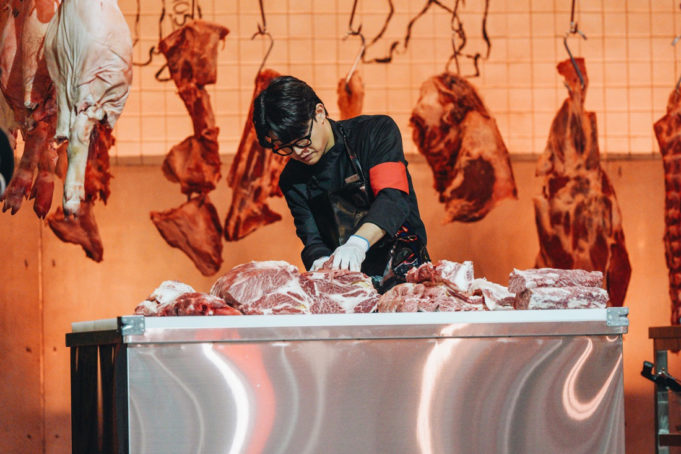Trust the Koreans to rethink the format of TV cooking competitions. We’ve had enough of the one where umpteen contestants are at their work stations mixing up their own interpretations of the same recipe or the one where the judges throw wacky combinations of ingredients at them and challenge them to make something edible. Netflix’s Culinary Class Wars is the new thing, and thanks to the Korean dose of chaos that it injects into the format, it’s great fun.
The show borrows its format from a fitness reality show called Physical 100. On one side are 20 “White Spoons,” Michelin-starred chefs and winners of the Korean versions of Iron Chef and MasterChef. On the other side, 80 “Black Spoons,” a motley collection that includes several YouTube cooking channel hosts, a lunch lady from a primary school in Yansang, a comic bookstore owner who taught himself to cook from recipes in manga comics, and a guy whose flattop hairstyle adds at least 12 inches to his height. (“His head looks like a cutting board!” says one contestant.) They all compete on a set so massive that someone inevitably compares it to Squid Game. Alas, the cash prize for the winner is a relatively paltry 300 million won, which currently works out to a shade over $200,000.
Who can judge all these people? Just two men: Anh Sung-jae, the country’s only chef with three Michelin stars, and Paik Jong-won, the owner of a restaurant conglomerate with almost 1,300 locations across South Korea. This seems to set up an art vs. commerce discussion about food, but Paik is more knowledgeable about fine cuisine than he lets on and Anh meets even the humblest contestants at their level.
Even when that level is ridiculous. The first round has the Black Spoons compete among themselves, being told to make the dish they’re best at. This results in a bewildering array of dishes, and the clown factor is high. A guy named Chirpy wears a bird mask to make his Nashville hot chicken sandwich, while one cook’s identity is so bound up with his bibimbap that he has legally changed his name to King Bi-bim. Declaring himself the one true apostle of bibimbap, King spells out his name in rice on the dish and has Judge Paik mix up the ingredients while he plays traditional Korean music on a drum (which forces all the other chefs to stop what they’re doing). After all this, Judge Paik takes one bite of his bibimbap, immediately shakes his hand, bows, and says, “You’re eliminated.”
The Black Spoons who survive move on to the second round, where they’re allowed to pick which White Spoon chef they want to face in a head-to-head battle. Italian food specialist Napoli Matfia steps up and challenges Chef Fabrizio Ferrari with a speech in Italian: “You are a great chef, but the best Italian food comes from Napoli!” An acclaimed master of Chinese cuisine, Chef Lu Chinglai finds two of his pupils matched up against each other, and he admits that he has never seen two women compete at cooking Chinese food. Some of the contestant pairs are tasked with making condiments such as perilla oil or the jang trio (gochujang, doenjang, and ganjang) into their main dishes, and the two contestants who get pumpkin are stumped by the gourd. See, in America, we know what to do with pumpkins.
The third round features something called the Room of Meat and gives way to total chaos as the White Spoon and Black Spoon chefs have to break up into teams and work together. This actually winds up handicapping the White Spoons, since they’re all used to running their own kitchens. A bleached-blond Black Spoon chef who calls himself Cooking Maniac makes Pad Thai out of ramyeon noodles with a recipe that I’m itching to try.
The fourth round features chefs separating into different teams and making up menus, deciding how much to charge their judges for their dishes. Chef Choi Hyun-seok sells out for the high-end customers with luxurious lobster and caviar plates that cost as much as 58,000 won. His strategy pays off when each of the 20 celebrity judges (who turn out to be social-media influencers, including former White House chef Andre Rush) is given 1 million won to spend on dishes.
The screen contains all manner of footnotes explaining Japanese, French, and American techniques to the Korean home cooks. The format of the show keeps changing in ways that surprise even the judges, and their submission to a blind taste-testing in Round 2 results in some famous chefs going home early. The distinctions between fine dining and street food collapse as contestants have to work outside their specialties, and the show will cure you of any notions that Korean food is all red and covered in chili flakes. All this makes Culinary Class Wars the most gripping reality-show competition on TV.













